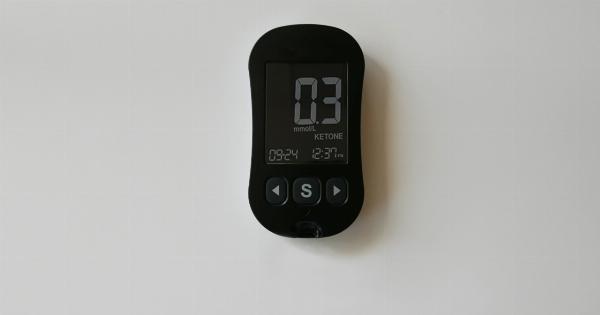High blood pressure, also known as hypertension, is a common health condition that affects millions of people worldwide.
It occurs when the force of blood against the walls of the arteries is consistently too high, putting extra strain on the heart and blood vessels. If left untreated, high blood pressure can lead to serious complications such as heart disease, stroke, and kidney problems.
While medication is often prescribed to manage hypertension, making certain dietary changes can also play a significant role in lowering blood pressure levels. In this article, we will explore ten effective dietary changes that can help reduce high blood pressure.
1. Reduce Sodium Intake
One of the most important dietary changes to lower high blood pressure is reducing sodium intake. High levels of sodium in the diet can cause the body to retain water, increasing blood volume and raising blood pressure.
It is recommended to limit sodium consumption to less than 2,300 milligrams per day, or even lower for individuals with hypertension. Avoiding processed and packaged foods, which are often high in sodium, can be helpful. Instead, opt for fresh, whole foods and use herbs, spices, and natural flavorings to enhance the taste of your meals.
2. Increase Potassium Intake
Potassium is a mineral that can help lower blood pressure by counteracting the negative effects of sodium. It aids in relaxing the walls of blood vessels, thus promoting better blood flow and reducing strain on the cardiovascular system.
Foods rich in potassium include bananas, oranges, avocados, tomatoes, sweet potatoes, and leafy greens. Adding these foods to your diet can be beneficial for reducing high blood pressure.
3. Adopt the DASH Diet
The Dietary Approaches to Stop Hypertension (DASH) diet is an eating plan specifically designed to lower blood pressure. It emphasizes the consumption of fruits, vegetables, whole grains, lean proteins, and low-fat dairy products.
The DASH diet encourages reducing sodium intake and increasing potassium, magnesium, and calcium intake. Numerous studies have shown the efficacy of this diet in reducing high blood pressure, making it a recommended approach for individuals with hypertension.
4. Incorporate Magnesium-Rich Foods
Magnesium is another mineral that plays a crucial role in regulating blood pressure. It helps relax blood vessels and promotes better blood flow. Including magnesium-rich foods in your diet can be beneficial for managing hypertension.
Foods high in magnesium include dark chocolate, spinach, almonds, cashews, legumes, and whole grains.
5. Limit Alcohol Consumption
Excessive alcohol consumption has been linked to high blood pressure. It can increase blood pressure levels and interfere with the effectiveness of blood pressure medications.
It is recommended to limit alcohol consumption to moderate levels, which means up to one drink per day for women and up to two drinks per day for men.
6. Reduce Caffeine Intake
Caffeine is found in many beverages, including coffee, tea, and energy drinks. While moderate caffeine intake is generally safe for most people, excessive consumption can lead to a temporary spike in blood pressure.
If you have hypertension, it may be advisable to limit caffeine intake or opt for decaf alternatives.
7. Include Omega-3 Fatty Acids
Omega-3 fatty acids are essential fats that have numerous health benefits, including reducing inflammation and lowering blood pressure. Foods rich in omega-3 fatty acids include fatty fish like salmon and mackerel, chia seeds, flaxseeds, and walnuts.
Adding these foods to your diet can have a positive impact on blood pressure levels.
8. Cut Back on Added Sugars
Consuming excessive amounts of added sugars has been linked to high blood pressure and other health issues. Sugary beverages, desserts, and processed foods are common sources of added sugars.
Opting for natural sweeteners like honey or consuming fresh fruits can satisfy your sweet tooth while avoiding the negative impact of added sugars on blood pressure.
9. Maintain a Healthy Weight
Being overweight or obese is a risk factor for high blood pressure. Losing excess weight can significantly lower blood pressure levels.
Adopting a balanced and calorie-controlled diet, along with regular physical activity, can help achieve and maintain a healthy weight, reducing the risk of hypertension.
10. Monitor Your Blood Pressure
Regularly monitoring your blood pressure is crucial in managing hypertension. It allows you to track any changes and evaluate the impact of dietary changes and lifestyle modifications.
Home blood pressure monitors are easily accessible and can aid in better blood pressure management.
Conclusion
High blood pressure is a serious condition that requires medical attention and lifestyle modifications. While medication is often prescribed, making dietary changes can also play a significant role in lowering blood pressure levels.
By reducing sodium intake, increasing potassium and magnesium intake, adopting the DASH diet, and making other beneficial changes such as limiting alcohol consumption and managing weight, individuals can effectively lower high blood pressure. It is essential to consult with a healthcare professional for personalized advice and guidance on managing hypertension through diet and lifestyle changes.





























